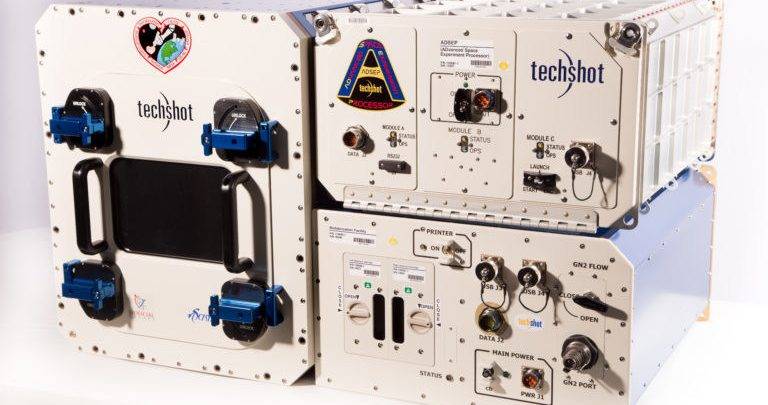It’s official, nScrypt’s BioFabrication Facility (BFF) bioprinter was launched into space yesterday aboard the SpaceX CRS-18 Cargo Mission. The bioprinting system is now on its way to the International Space Station (ISS), where it will ultimately be used to print adult human cells and adult tissue-derived proteins into tissue structures.
The recent SpaceX mission launched from Florida’s Cape Canaveral Air Force Station yesterday, where onlookers got to see a Falcon 9 rocket disappear beyond the clouds. The rocket is carrying a Dragon capsule to the ISS, which is itself loaded with the BFF bioprinting system as well as roughly 5,000 pounds of other experiments and supplies.
When the Dragon capsule reaches the ISS, NASA astronauts Nick Hague and Christina Koch will grapple the cargo, assisted by NASA’s Andrew Morgan, who will monitor telemetry throughout the cargo load’s approach to the space station. Once the capsule has been captured, mission control in Houston will send ground commands for the station’s arm for installation.

Once nScrypt’s BioFabrication Facility bioprinter is installed aboard the ISS, the system’s operations will be controlled by scientists on Earth. Initially, the bioprinter will be producing test prints made from cardiac-like tissues of increasing thicknesses. The bioprinter is expected to perform better in space, as the three-dimensional cellular structures won’t be subject to gravity’s pull and can thus mature while holding their shape.
The first phase of the BFF project is expected to last roughly two years, after which the system will move onto bioprinting heart patches, which will be sent back to Earth for evaluation. Way down the line, nScrypt hopes its system will be used to print full organs in space.
“Assembling a human lung or other organ is still years away, but it is no longer science fiction,” said nScrypt CEO Ken Church, PhD. “BFF is the roadmap for getting there. And this BFF team knows how to follow that map. I have no doubt someday BFF will provide someone like my daughter with a second lung.”
Source: 3dprintingmedia.network


